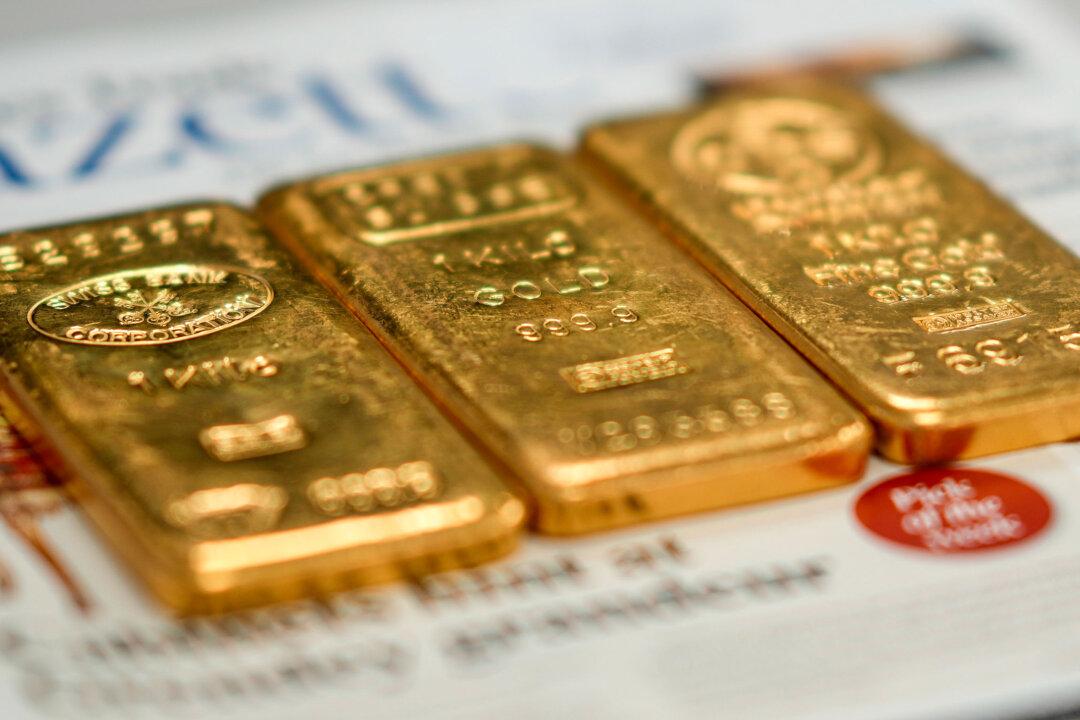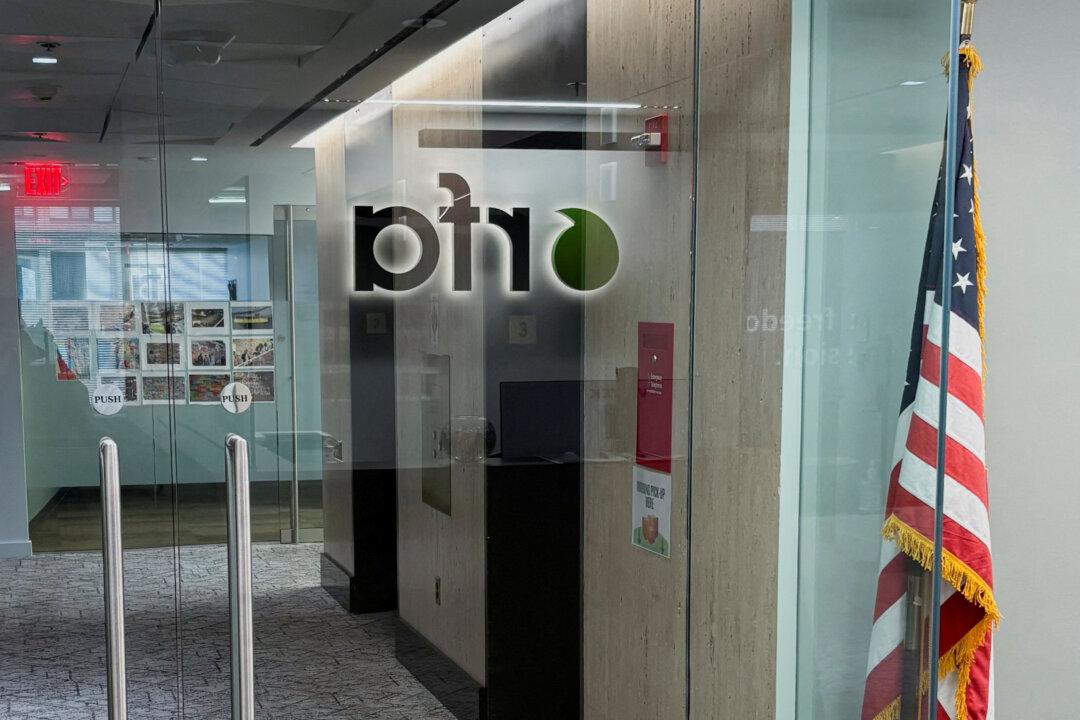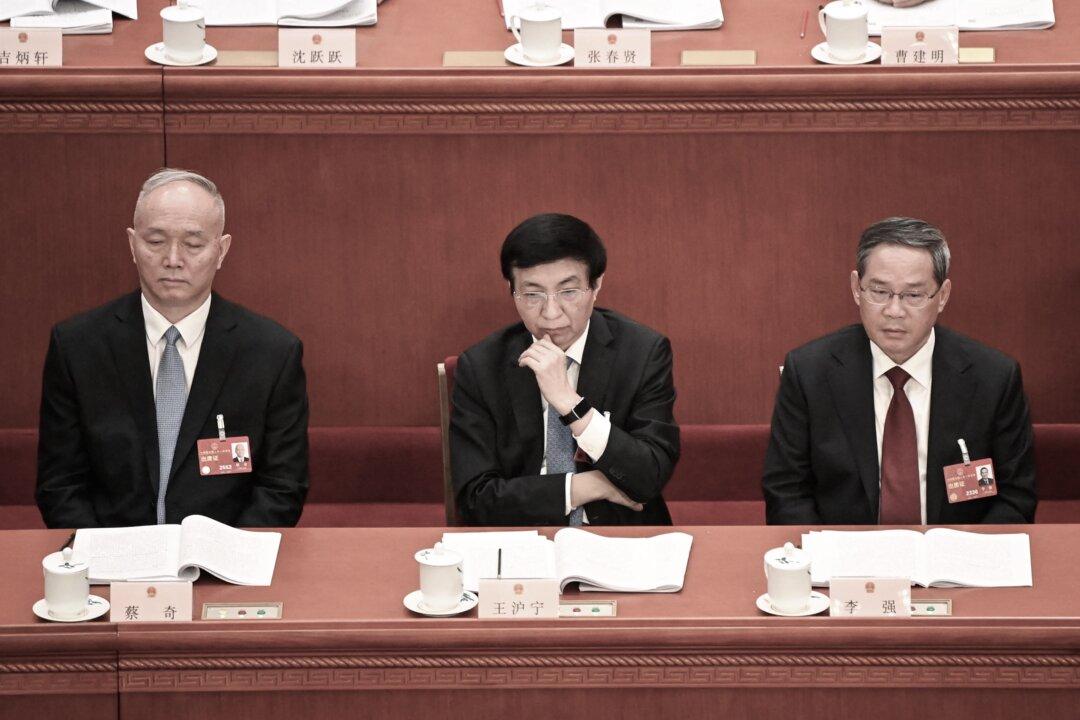Experts see the simultaneous rise in gold prices and the U.S. dollar—a rare market phenomenon—as signs of growing concerns about global economic risks. The situation has reignited discussions about returning to the gold standard, a position championed by conservative economists.
Proponents of the gold standard say that a gold-backed currency system provides the foundation for disciplined monetary policy, long-term economic stability, and prosperity. They argue that the fiat currency system, not backed by any physical commodity, is the root cause of government overspending and inflation.
Concerns Over Global Economic Risks
Since the beginning of the year, international gold prices have surged by more than 32 percent. Also, the U.S. dollar and gold have risen in tandem, a phenomenon that one finance expert attributes to investor reactions to a confluence of global risks.This concurrent rise of both currencies defies traditional market logic, as gold is typically viewed as a hedge against currency devaluation, meaning it tends to rise when the dollar falls and vice versa.
According to David Huang, a U.S.-based economist, the unusual market behavior reflects investors gripped by multiple uncertainties, where both assets are seen as offering security but in different ways.
Huang explained that investors’ fear of economic instability stems from multiple global risks, including the wars in Ukraine and the Middle East and the loose monetary policies adopted by central banks in major economies that drive up debt levels. Together, these factors have increased the market’s demand for risk-averse strategies.
“In these volatile circumstances, investors are flocking to gold, which has long been valued for its innate safe-haven qualities. At the same time, the U.S. dollar maintains its status as a global refuge in times of crisis,” Huang told The Epoch Times.
Mike Sun, a China expert and a U.S.-based investment consultant who uses an alias to protect his business, shares a similar view.
Return to Gold Standard, but Not in Short Term
Amid growing economic anxiety, many market analysts call for a more responsible monetary policy framework, such as a return to a gold-backed currency, in response to concerns about uncontrollable price increases, excessive central bank intervention in markets, and financial instability. Since February 2020, U.S. consumer prices have jumped 21.4 percent, with inflation peaking two years ago at 9.1 percent—the highest level in several decades.In 1971, then-President Richard Nixon announced that the U.S. dollar would no longer be directly linked to gold, which marked the end of the Bretton Woods system. At the time, the United States was under economic pressure, including rising inflation, a growing trade deficit, and the financial strain of the Vietnam War. Many economists believed that the situation made it increasingly difficult for the United States to maintain the gold standard.
Under the Bretton Woods system—a monetary framework established in 1944 that pegged the U.S. dollar to gold and subsequently other currencies to the dollar—the United States was required to maintain substantial gold reserves to back its currency, limiting the government’s flexibility in managing the money supply.
Nixon’s move to decouple the dollar from gold shifted the world toward floating exchange rates and fiat currencies, allowing for greater flexibility in monetary policy but introducing new problems in global financial systems.
Today, with the constraints on government money supply lifted, many countries have over-issued currency, and their accumulated debts have reached astronomical levels.
Similarly, China’s debt problem has become a significant concern, with the country’s total debt—comprising government, corporate, and household debt—exceeding 300 percent of its GDP.
Hence, a growing number of influential leaders are supporting reinstating the gold standard.
Trump economic adviser Judy Shelton, in her recent book “Good as Gold: How to Unleash the Power of Sound Money,” advocates for a return to a monetary system that prioritizes long-term stability and fiscal discipline, which she believes is embodied in the gold standard.
Shelton was nominated by then-President Donald Trump to the Board of Governors of the Federal Reserve in 2020. The Senate didn’t confirm her nomination, mainly due to concerns over her conservative views on monetary policy and her advocacy for a return to the gold standard. With Trump returning to the White House in 2025, Shelton could be nominated again.
Shelton argues that the decision to abandon the gold standard removed constraints on government borrowing and spending, which paved the way for runaway government debt. In her view, the lack of fiscal discipline led to inflation and the devaluation of the U.S. dollar.
Her solution is to initiate serious reforms aimed at restoring sound money principles. While acknowledging that a direct return to a full gold standard may not be feasible, she suggests that elements of the gold standard—such as using gold as a reserve asset or benchmark for monetary policy—could be reintroduced to restore discipline to the monetary system and safeguard consumers’ purchasing power.
Other prominent advocates of a gold-backed currency include Nigel Farage, the British politician and former leader of the UK Independence Party, and Raoul Pal, a renowned financial strategist and CEO of Global Macro Investor.
Under the gold standard, the United States was required to maintain substantial gold reserves to back the dollar, limiting the government’s flexibility in managing the money supply. Critics argued that this constraint hindered the ability to respond to emerging economic challenges.
However, even some experts who agree with the gold standard approach say there are significant practical challenges in doing so.
Huang pointed out that excessive debt makes a short-term return to the gold standard unfeasible.
“The gold standard could serve as a direct solution to controlling inflation by limiting the ability of central banks to over-issue currency,” he said.
“However, given the high debt levels of many countries, any abrupt shift to a new monetary system would result in a substantial devaluation of national currencies. Strong opposition from central banks makes it virtually infeasible, and for now, the concept of returning to the gold standard remains mostly a theoretical discussion.”
Frank Tian Xie, John M. Olin Palmetto chair professor in business and professor of marketing at the University of South Carolina–Aiken, also believes that the gold standard offers the long-term benefits of stabilizing the economy and stimulating growth, while the fiat currency system has allowed many governments to abuse their power to print money, causing global inflation.
Regarding the feasibility of returning to the gold standard, he supported Huang’s viewpoint from a different angle.
“It is not feasible in the short term, especially in the United States, where we consistently run a trade deficit. Adopting the gold standard would quickly deplete the country’s gold reserves, making it impractical,” Xie said.
Under the gold standard, a trade surplus can increase a country’s gold reserves, while a trade deficit can deplete those reserves, making it more difficult for that country to maintain a gold-backed monetary system.







